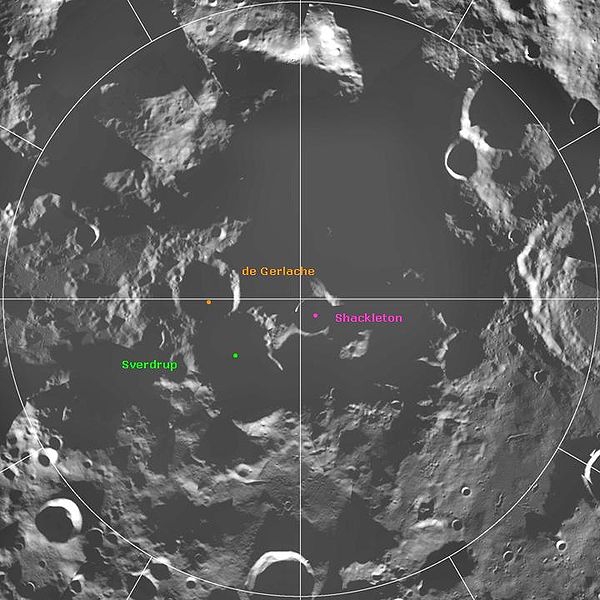de Gerlache is a lunar impact crater that is located along the southern limb of the Moon, within a crater diameter of Shackleton at the south pole. From the Earth this crater is seen from the edge, and it lies in perpetual darkness. Thus little or no detail can be seen of this crater, other than the edge of the rim. However, the crater is clearly visible in Earth-based radar images. The crater is roughly circular, with some slight wear. No craters of note overlie the rim, although some formations may be attached to the southern and western edges.
de Gerlache crater as imaged by Clementine.
de Gerlache crater as imaged by LRO.
de Gerlache crater as imaged by Earth-based radar.
Shackleton is an impact crater that lies at the lunar south pole. The peaks along the crater's rim are exposed to almost continual sunlight, while the interior is perpetually in shadow. The low-temperature interior of this crater functions as a cold trap that may capture and freeze volatiles shed during comet impacts on the Moon. Measurements by the Lunar Prospector spacecraft showed higher than normal amounts of hydrogen within the crater, which may indicate the presence of water ice. The crater is named after Antarctic explorer Ernest Shackleton.
South lunar pole as imaged by the Diviner instrument on the NASA's Lunar Reconnaissance Orbiter. Shackleton is at bottom center.
Mosaic of the Shackleton Crater created by LROC (Lunar Reconnaissance Orbiter) and ShadowCam
Shackleton as imaged by Clementine
Shackleton as imaged by LRO





